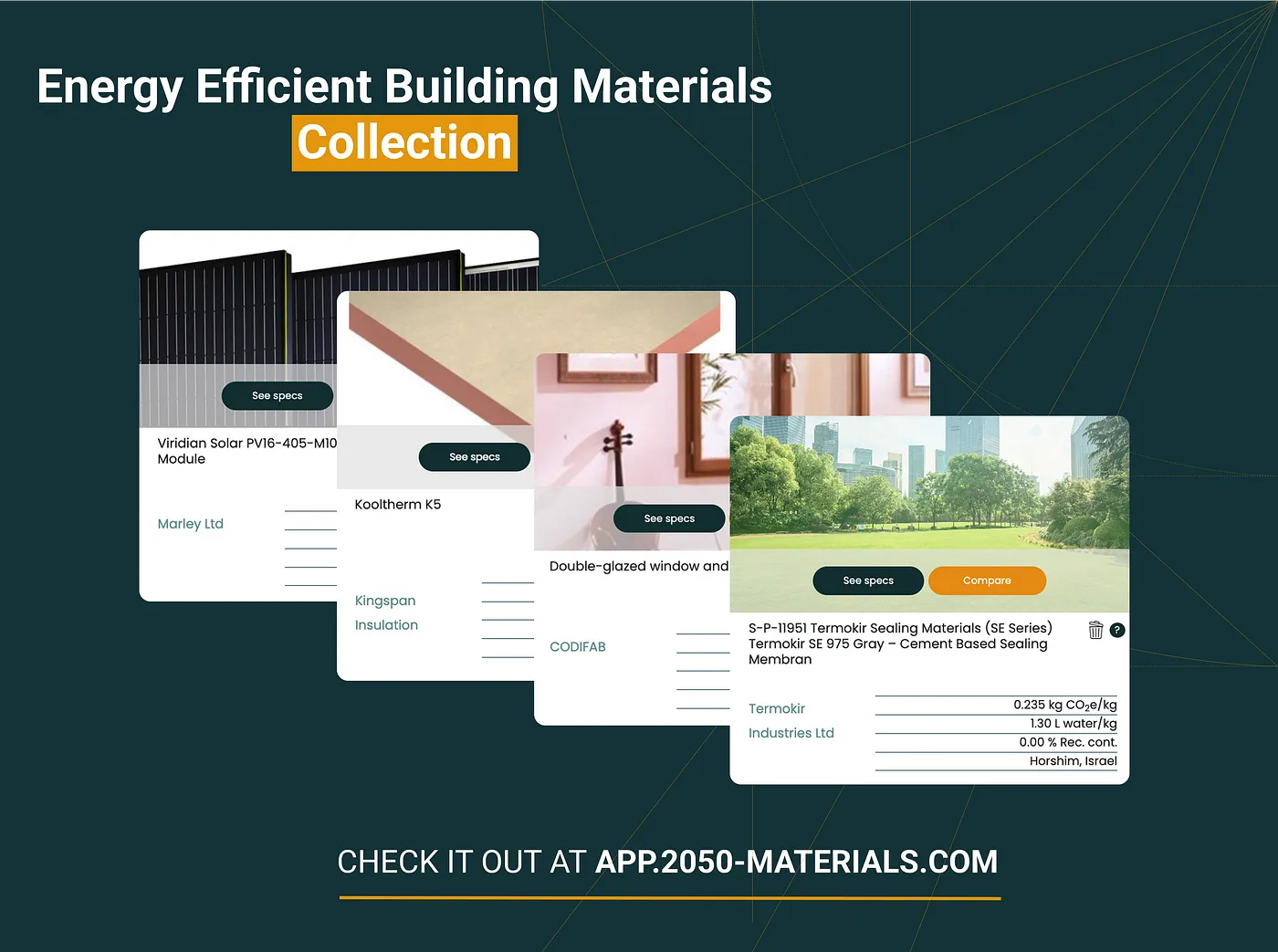Is BIM a Failed Technology, or did we just set our expectations too high?
Building Information Modeling (BIM) has been both hailed as the future of the Architecture, Engineering, and Construction (AEC) sector and criticized as a technology that often fails to deliver on its promises. In a recent LinkedIn post titled “Is BIM a Failed Technology?”, we saw a storm of answers which we thought are worth breaking down here, to hopefully get to an answer on how to move forward.
 Disclaimer: As someone involved in the world of sustainability and BIM, I find this conversation particularly pertinent. Working with 2050 Materials, a company committed to embedding sustainability data into the AEC digital ecosystem, I recognize the critical role that BIM plays. This article aims to dissect the complexities around BIM, integrating opinions from multiple perspectives, and attempts to delineate a more balanced, effective path forward.
Disclaimer: As someone involved in the world of sustainability and BIM, I find this conversation particularly pertinent. Working with 2050 Materials, a company committed to embedding sustainability data into the AEC digital ecosystem, I recognize the critical role that BIM plays. This article aims to dissect the complexities around BIM, integrating opinions from multiple perspectives, and attempts to delineate a more balanced, effective path forward.

Intended Use vs. Real Use of BIM
The Drawing Conundrum
The post brought up the fundamental point that 2D drawings still have a vital role in the AEC industry, one that BIM models can’t replace. Drawings convey unique aspects of a project that 3D models cannot, serving a different communicative purpose.
That has many benefits. For example, technologies like 2050 Materials’ API could integrate with both 2D and 3D approaches, providing real-time embodied impact calculations and thereby enriching both.
Misaligned Incentives
Another grievance pointed out is the misalignment of responsibilities, particularly for architects and engineers. Often, these professionals are burdened with tasks in BIM that don’t relate directly to their expertise. Training and education could mitigate this issue. If everyone on a project can access and input meaningful data the tool becomes more reliable and impactful.
Cool Possibilities Distraction
BIM undoubtedly offers cool capabilities, but an excessive focus on these can distract from the real, practical benefits it should deliver — collaboration and information accessibility. BIM should be about improving communication and delivering value effectively, irrespective of the project’s size.
Complexity of BIM Tools
Finally, BIM’s complexity often stands as a barrier. BIM should be about simplifying processes and improving collaboration, but its complicated tools often have the opposite effect.
The “Training and Education” Principle
Many of the criticisms directed at BIM, come down to the issue of proper training and education. With adequately trained resources, the challenges mentioned can not only be overcome but turned into assets.
The OpenBIM Debate
OpenBIM poses the risk of creating a “feudal class of professionals” if BIM technology is closed off. Integration of AI and automation, could democratize BIM usage. OpenBIM advocates also support computational literacy, a sentiment I wholeheartedly share.
The ROI Issue
Yes, ROI is king. And as one commentator on the post noted, BIM can offer clear ROI benefits through clash detection on complex projects.
Cold hard data might say otherwise
Finally, the perspective of experienced professionals that BIM has offered excellent outcomes on both small and large projects can’t be ignored. The problem, therefore, is perhaps not inherently with BIM but maybe how it is applied and who is involved in its application.
Moving Forward: A Balanced View
A balanced view suggests that BIM is neither a failed technology nor a one-size-fits-all solution. It’s a powerful tool that, if wielded correctly, can bring unprecedented efficiency and sustainability to the AEC industry.
Companies like 2050 Materials are already taking steps to integrate actionable sustainability data into BIM processes, making it easier for all stakeholders to make informed decisions, and maximizing the impact of BIM-powered projects.
Climate Change and BIM
Amid all these conversations, it’s crucial to discuss the impact of BIM and similar technologies on climate change. While the AEC industry is a significant contributor to global carbon emissions, it also holds the potential to make meaningful changes in reducing environmental impact.
BIM processes across the industry are already integrated with databases like 2050 Materials, where carbon footprints of materials are readily available to the user and real-time LCAs are run.
Good Data vs Bad Data vs No Data
In the context of Building Information Modeling (BIM), the phrase “no data is better than bad data” takes on critical importance. BIM serves as a digital representation of the physical and functional aspects of a building, acting as a shared knowledge resource for decision-making. When the data within a BIM system is inaccurate or misleading, it can lead to costly mistakes, delays, and ultimately, suboptimal buildings. In a worst-case scenario, bad data could even lead to structural flaws that pose safety risks. Therefore, having no data at all can sometimes be preferable, as it prompts teams to seek out accurate information rather than make decisions based on false premises.
Bad data in BIM can also lead to sustainability pitfalls. For instance, if material properties are inaccurately represented, the construction may end up being far less energy-efficient or sustainable than planned. This is particularly problematic in an era where the construction sector is under immense pressure to reduce its carbon footprint and contribute to climate change mitigation. The risk here isn’t just financial or reputational; it’s environmental. Bad data can result in real-world consequences that are at odds with global sustainability goals.
Therefore, it’s essential to prioritize good data quality in BIM applications. Data validation procedures, ongoing training for team members, and a culture that encourages data integrity can all contribute to more reliable BIM models.
Integrating high-quality, real-time data — such as sustainability metrics for different materials — can also play a crucial role in enhancing the accuracy and reliability of BIM systems. In this way, BIM can truly live up to its potential as a tool for not just streamlining construction, but also for building a more sustainable future.
Conclusion
Is BIM inherently too process-heavy for smaller projects? No, but it does need to be applied judiciously. Is #NoBIM a better approach? Perhaps for some projects, but writing off BIM entirely overlooks its potential benefits. Instead of viewing BIM as a monolithic entity, we should see it as a flexible tool that can be adapted to the needs of each project, big or small. After all, the goal is not just to build, but to build better. And for that, we need all the tools we can get.
Related articles

The Most Interesting Low Carbon Products in Office Design
In this article and collection, we highlight 11 outstanding products that contribute to a lower carbon footprint in office design.
Read more
Top Low Carbon Building Boards: Performance, Benefits, and Use Cases
The building boards highlighted in this article and collection showcase low-carbon innovation in modern construction.
Read more
11 Interesting Energy Efficient Building Materials for Reduced Environmental Impact
Discover a collection of energy efficient building materials that not only reduce greenhouse gas emissions but also contribute to long-term durability.
Read more